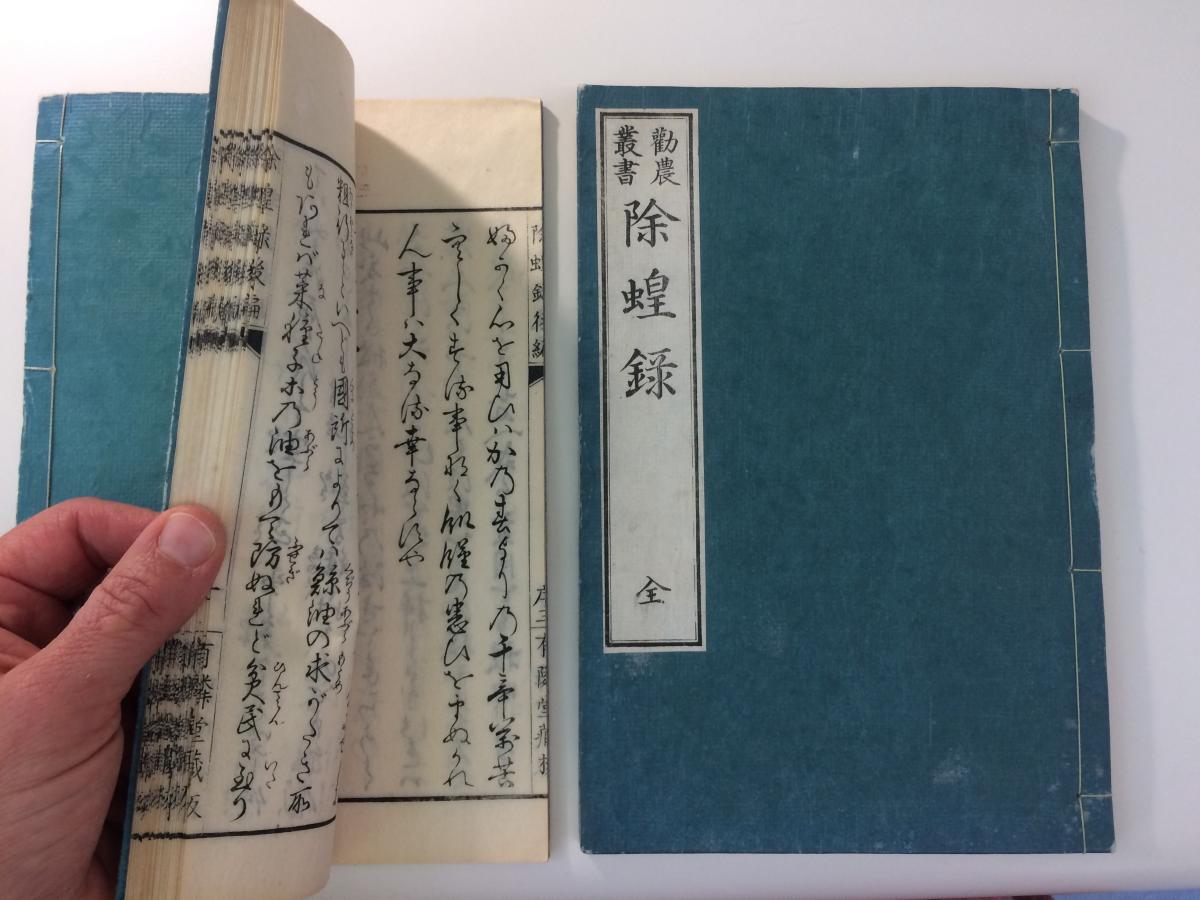Traditional Japanese bindings are a bit different from the Western bindings we are accustomed to. The easiest way to describe them, is that they are used exactly the opposite from how we use our books. They are opened from left to right and read from right to left in columns.

A book that recently came through the lab was bound in the opposite manner too – the pages were folded, but the loose edges comprised the spine with the folds at the fore edge. The paper was a soft, medium weight Mulberry, the same type of paper we use for mending.
The pages were also only printed on one side, then folded and sewn in. Along the fold of every page was text, which is what what stirred my curiosity. What information does the text along the fold convey?

In Western bindings, printers place collation marks on the folded edge of the gathers that make up the text block. These would line up in a pattern indicating the gathers are sequenced properly.
The printing on the folds of the Japanese binding are placed consistently throughout; I thought maybe they would make a picture when fanned to elegantly achieve the same purpose, but they didn’t. The internet to the rescue!
This style of traditional Japanese binding is known as fukurotoji, or bound pocket books (the folded pages make up the “pockets”) and they are block printed on one side only so that when folded you have text or image on each page. The folded area of the sheet is known as “The Pillar” and the printed text straddles the fold, so it is visible from both sides. The text provides information about the book, such as the title, author, volume number, sheet number and publisher.

This type of binding was favored by publishers in the Edo period which spanned from 1603-1867. This particular book, Jokaoroku, was published in 1826 and is part of Hagley's Carter Litchfield Collection on the History of Fatty Materials.
Sharon Fickeissen is the Library Conservation Technician at Hagley Museum and Library.
